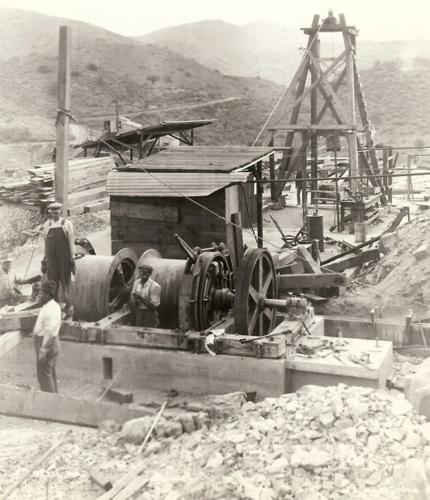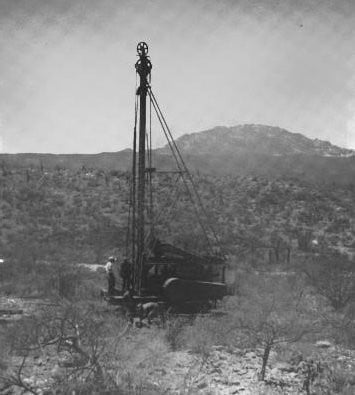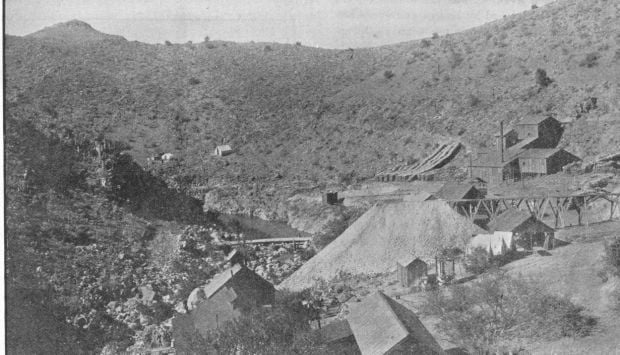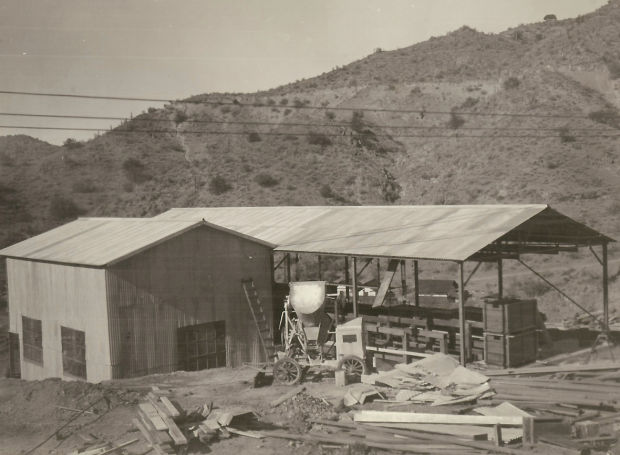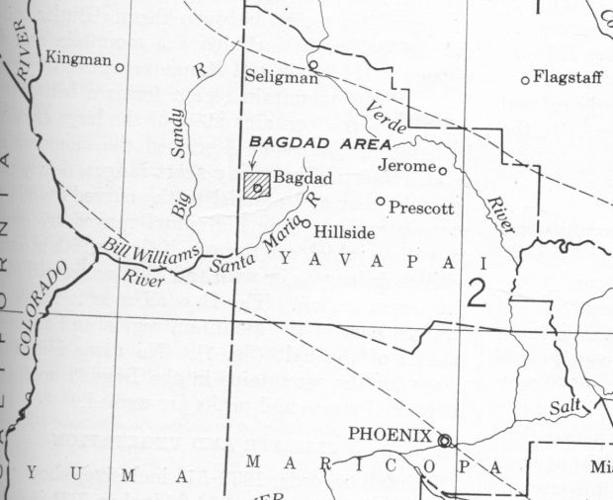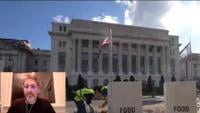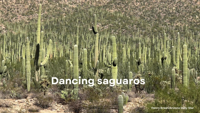The Bagdad Mine is a porphyry copper deposit containing both sulfide and oxide mineralization.
Some sources say Bagdad was named after a father-son mining operation.
The sonãs responsibility was to fill ore bags, as the story goes, and when he needed another he would holler ãbag, Dad.ã
Other sources say Bagdad has an Arabian origin.
Although the Bagdad claim was recognized in 1882, because of its remoteness and high shipping costs it remained largely undeveloped until 1927, when the Bagdad Copper Co. assumed control of the property.
Copper mining at Bagdad started in 1928 with the establishment of a milling operation whose production resulted in 277,501 pounds of copper the following year.
Bagdad was at the forefront of mining research and development, including churn drilling (extracting large samples of ore through the use of large-diameter drills), block caving (a method of mining a large block of ore by systematically undercutting so the ore will cave in) and the roast-leach-electrowinning process.
People are also reading…
World War II and the postwar boom led to increased copper, lead and zinc production at Bagdad. Beginning in 1945, the mine began conversion to an open-pit operation, and production began the following year.
In 1973, the mine operated by Bagdad Copper merged with the Cyprus Mines Corp.
A $200 million expansion followed in 1977.
Located a 1ó miles from the open pit, the town built to house mine employees is noted for its Spanish architecture that in the late 1970s replaced many of the previous frame houses.
Bagdad continues to function as an open-pit copper mine with molybdenum as a byproduct. Owned by Freeport-McMoRan Copper & Gold Inc., it is one of two active Arizona company towns; the other is Morenci.
Bagdad is noted for having the worldãs first commercial-scale concentrate leach processing facility in 2003 and, since 1970, one of the longest continuously operating solution extraction-electrowinning plants in the world, with the ability to produce 25 million pounds of copper a year.
William Ascarza is an archivist, historian and author. His latest book, “The Chiricahua Mountains: History and Nature,” is available at Barnes and Noble online. Email him at mining@azstarnet.com
Sources: Anderson, C.A., E.A. Scholz and J.D. Strobell Jr. 1955. “Geology and Ore Deposits of the Bagdad Area Yavapai County Arizona.” Geological Survey Professional Paper 278; Bogart, Robert C. 1990. “Some Talk About a Copper Mine: The History of Bagdad, Arizona”; Bulletin No. 180. 1969. “Mineral and Water Resources of Arizona”; Wilson, Eldred D. 1962. “A Résumé of the Geology of Arizona.” Arizona Bureau of Mines Bulletin 171.


